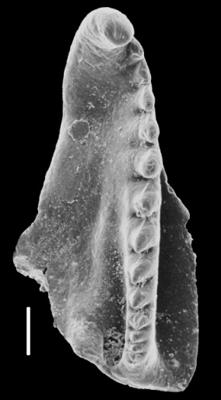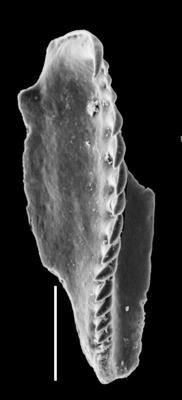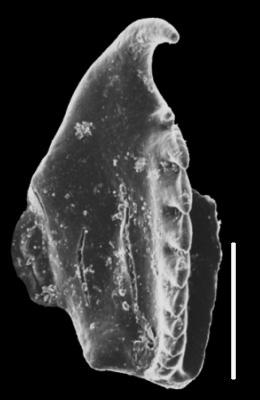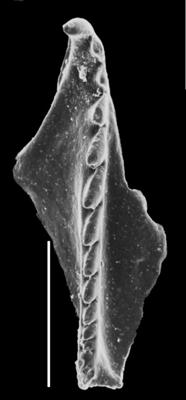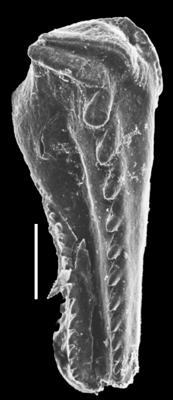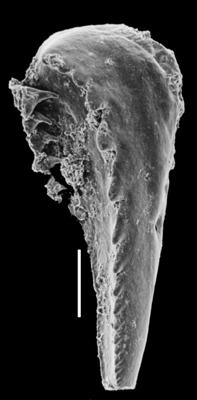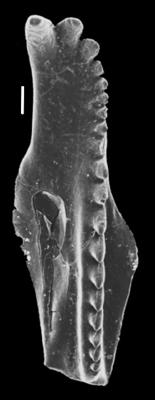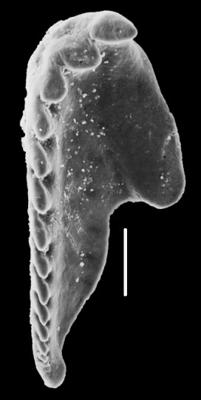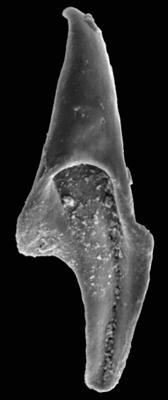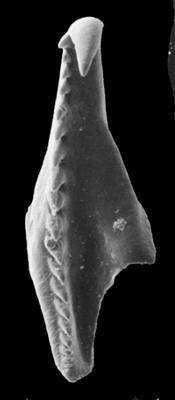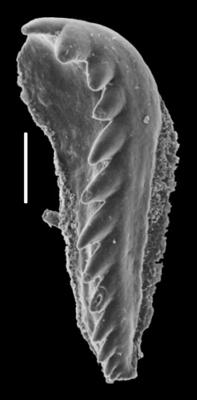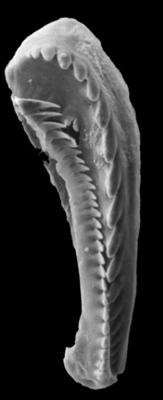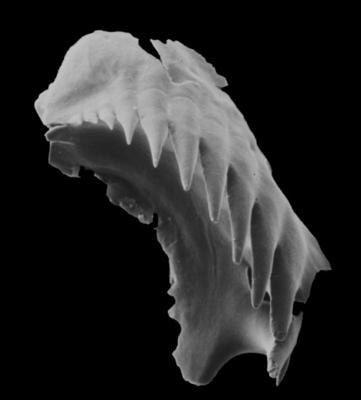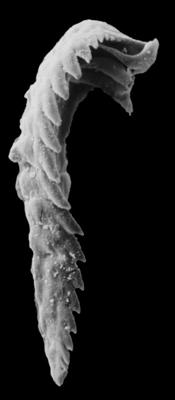Hints, O., 2000
| Author(s): | Hints, O. |
|---|---|
| Year: | 2000 |
| Title: | Ordovician eunicid polychaetes of Estonia and surrounding areas: review of their distribution and diversification |
| Journal: | Review of Palaeobotany and Palynology |
| Volume: | 113 |
| Number: | 1-3 |
| Pages: | 41-55 |
| Abstract | Scolecodonts, the jaws of polychaete worms, are common and diverse palynomorphs in the Ordovician rocks of Estonia and surrounding areas. Some 120 apparatus-based species representing about 40 genera have been recorded thus far. Relatively long stratigraphical ranges of the majority of species reflect a low rate of evolution of jawed polychaetes. However, some individual species, as well as structural changes in the assemblages, appear to be useful for stratigraphical purposes. Environmental events like those in the middle Caradoc and late Ashgill had some impact on polychaete faunas, but less than on several other groups. In order to study the spatial distribution of eunicids, faunas of particular intervals of the Ordovician were investigated. Quantitative analysis revealed that polychaete assemblages with a very consistent qualitative and quantitative composition were widespread over long distances within the belts of similar facies conditions in the Baltoscandian Palaeobasin. On the other hand, it appears that species of Ordovician jawed polychaetes were strongly influenced by particular facies, and accordingly well differentiated along the palaeobasin gradient. The decrease in diversity and abundance towards the deeper-water part of the palaeobasin indicates that the majority of Ordovician eunicids preferred relatively shallow-water conditions. The increase in differentiation of environments is accompanied by an increase in differentiation of polychaete assemblages. |
| Keywords: | Eesti, mikrofossiilid, Ordovician, paleontoloogia, scolecodonts |
| DOI: | https://doi.org/10.1016/S0034-6667(00)00051-8 |
| SARV-WB: | edit record |








